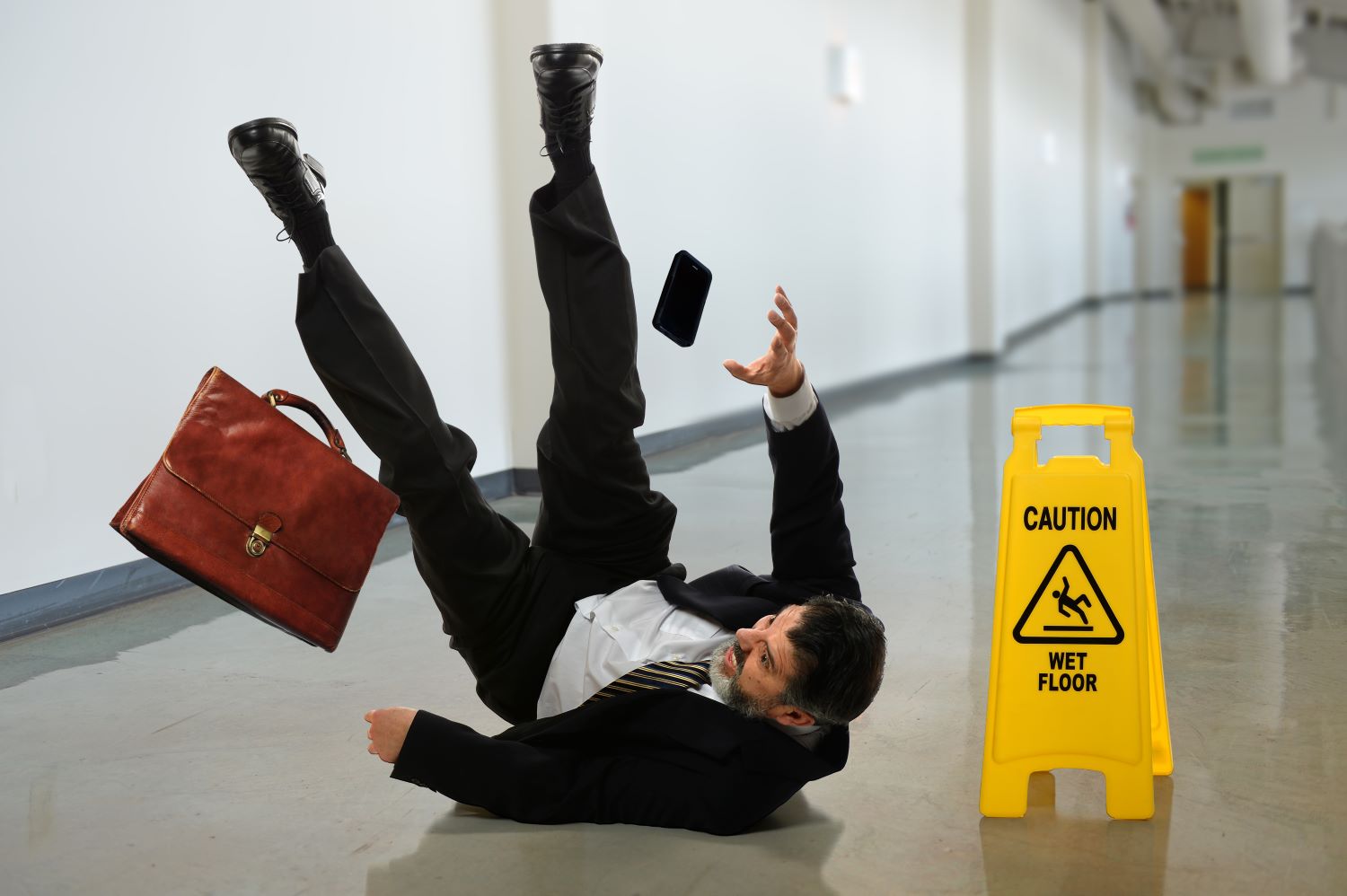
September, 2019
Here are five easy ways of reducing the risks of slips, trips and falls in the workplace for both workers and visitors. It all begins with effective floor safety practices.
According to an accidents report by the Health and Safety Executive (HSE), trips, slips and falls are the leading causes of non-fatal accidents in the workplace. These types of injuries result in losses amounting to thousands of pounds through settlements, compensations, and other expenses. Below are five tips to observe floor safety.
1) Encourage basic housekeeping practices
Maintain a neat and well-organised workplace to reduce the number of potential tripping hazards on the floor and pathways. Many tripping accidents occur when the victims encounter an unexpected obstacle along their path. Some of the common culprits include cables, open drawers, work tools, misplaced furniture, and litter.
Implement the 5S (Sort, Set in Order, Shine, Standardise, Sustain) system of housekeeping to declutter and organise things in the workplace. The 5S principle is an easy-to-follow system for keeping your workplace clean, tidy, and safe.
2) Clean up spills immediately
Spills are a common cause of most slipping accidents, especially on non-carpeted smooth surfaces and tiled floors. Occasional spills of drinks, food, and other material are unavoidable. Whenever this happens, it’s always best to clean up the mess immediately to prevent its spread and avoid accidents. Besides, some spills can penetrate deep into the flooring material and cause permanent damage if left to sit for a long time.
Enforce a strict procedure for handling spills, and keep fast-drying cleaning supplies handy to clear away slip hazards quickly. We have written a couple of useful articles on cleaning carpet tiles and vinyl flooring.
3) Maintain proper lighting
Keep the pathways, aisles, stairs and other critical areas well lit to improve visibility. Unlikely obstacles can easily be hidden in darkness and shadows. Installing floor lights, spotlights, and even luminous or reflective guide tapes goes a long way in helping individuals identify and avoid potential slipping and tripping hazards.
4) Signage
Mark the floor appropriately to call out potential hazards if there are any. It could be to a slippery surface, loose surface, gap, raised floor surface, or missing step. The signs can be portable cones or stickers and markings on the walls and floor. The most important thing is that the signs are well labelled and clearly visible to draw attention and guide movement around obstacles.
5) Repair damaged surfaces
It’s essential to run regular floor care and maintenance practices to prevent and remedy various flooring defects that develop over time. The defects and maintenance methods largely depend on the floor type and floor loading.
With these simple flooring safety tips you can reduce risks. Get in touch with us to learn more about our commercial flooring options.